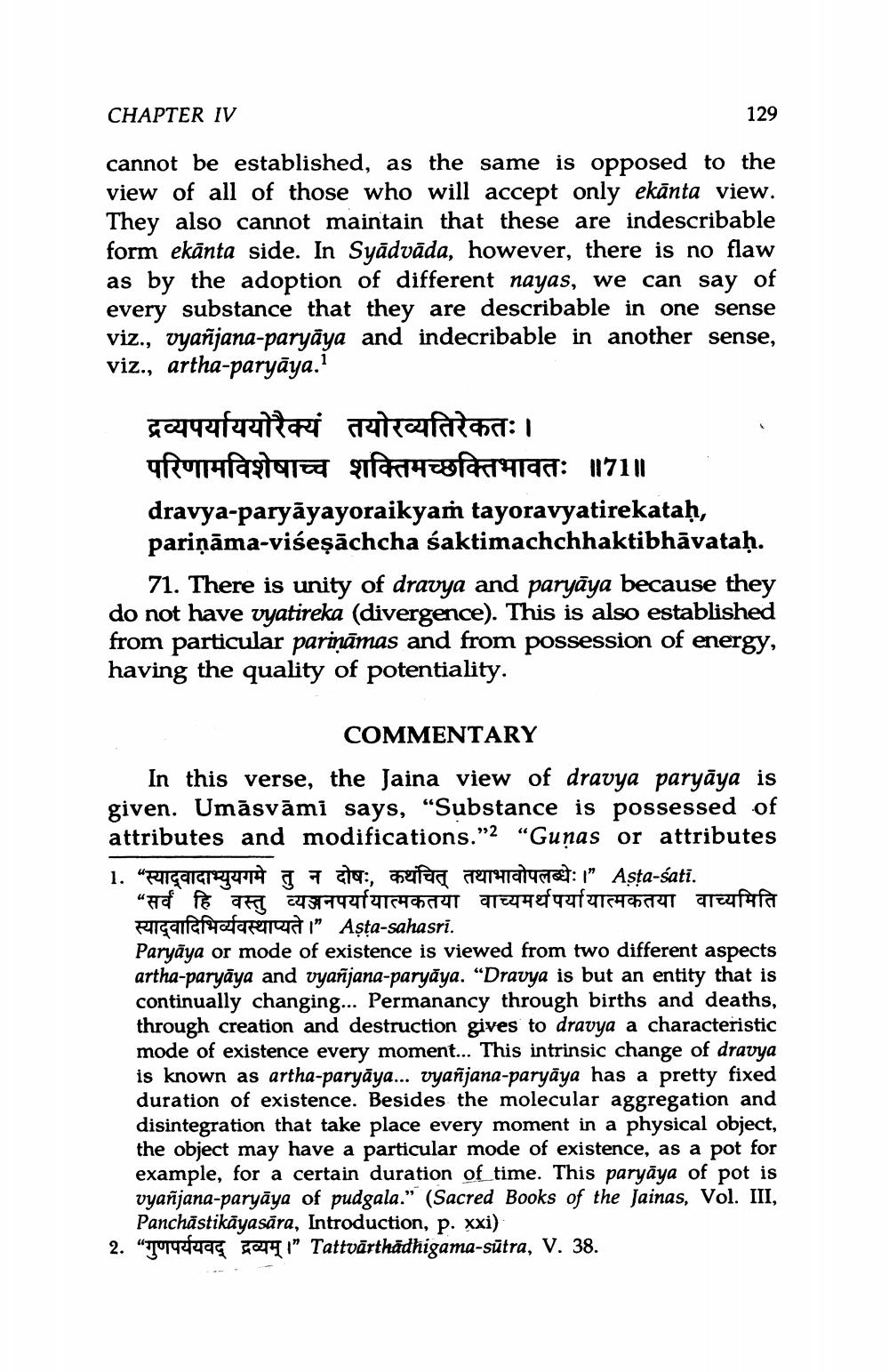________________
CHAPTER IV
cannot be established, as the same is opposed to the view of all of those who will accept only ekānta view. They also cannot maintain that these are indescribable form ekanta side. In Syādvāda, however, there is no flaw as by the adoption of different nayas, we can say of every substance that they are describable in one sense viz., vyañjana-paryaya and indecribable in another sense, viz., artha-paryāya.1
129
द्रव्यपर्याययोरैक्यं तयोरव्यतिरेकतः ।
परिणामविशेषाच्च शक्तिमच्छक्तिभावतः ॥ 71॥
dravya-paryayayoraikyaṁ tayoravyatirekataḥ, pariņāma-viśeṣāchcha śaktimachchhaktibhāvataḥ.
71. There is unity of dravya and paryāya because they do not have vyatireka (divergence). This is also established from particular parināmas and from possession of energy, having the quality of potentiality.
COMMENTARY
In this verse, the Jaina view of dravya paryāya is given. Umāsvāmi says, "Substance is possessed of attributes and modifications."2 "Gunas or attributes 1. “ स्यादवादाभ्युयगमे तु न दोषः, कथंचित् तथाभावोपलब्धेः ।” Asta-śati.
“सर्वं हि वस्तु व्यञ्जनपर्यायात्मकतया वाच्यमर्थ पर्यायात्मकतया वाच्यमिति enganfefeferene" Aṣṭa-sahasri.
Paryaya or mode of existence is viewed from two different aspects artha-paryaya and vyañjana-paryaya. "Dravya is but an entity that is continually changing... Permanancy through births and deaths, through creation and destruction gives to dravya a characteristic mode of existence every moment... This intrinsic change of dravya is known as artha-paryāya... vyañjana-paryāya has a pretty fixed duration of existence. Besides the molecular aggregation and disintegration that take place every moment in a physical object, the object may have a particular mode of existence, as a pot for example, for a certain duration of time. This paryaya of pot is vyanjana-paryāya of pudgala." (Sacred Books of the Jainas, Vol. III, Panchästikäyasāra, Introduction, p. xxi)
2. " " Tattvārthadhigama-sūtra, V. 38.




